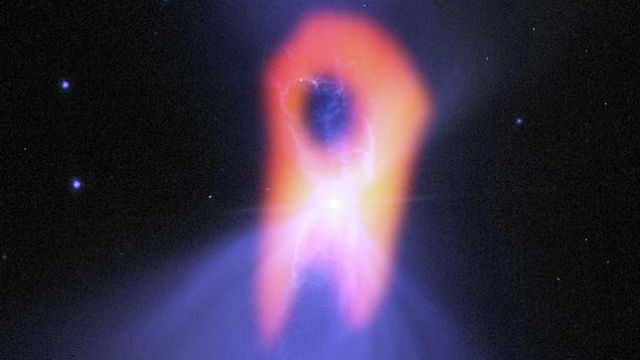Messier Monday: A Spiral Sliver Headed Our Way: M98
One of the only members of the Virgo Cluster… that isn’t located in Virgo!
“[L]ife is a luminous halo, a semi-transparent envelope surrounding us from the beginning of consciousness to the end.” –Virginia Woolf
Here on Messier Monday, I don’t normally highlight galaxies — the deep space “island Universes” with billions of stars all unto themselves — when the Moon is out, as it’s often difficult to see them. But with the premiere of the new Cosmos yesterday, I can’t help but follow my imagination deep into the Universe, all the way to one of the most unique galaxies out there.
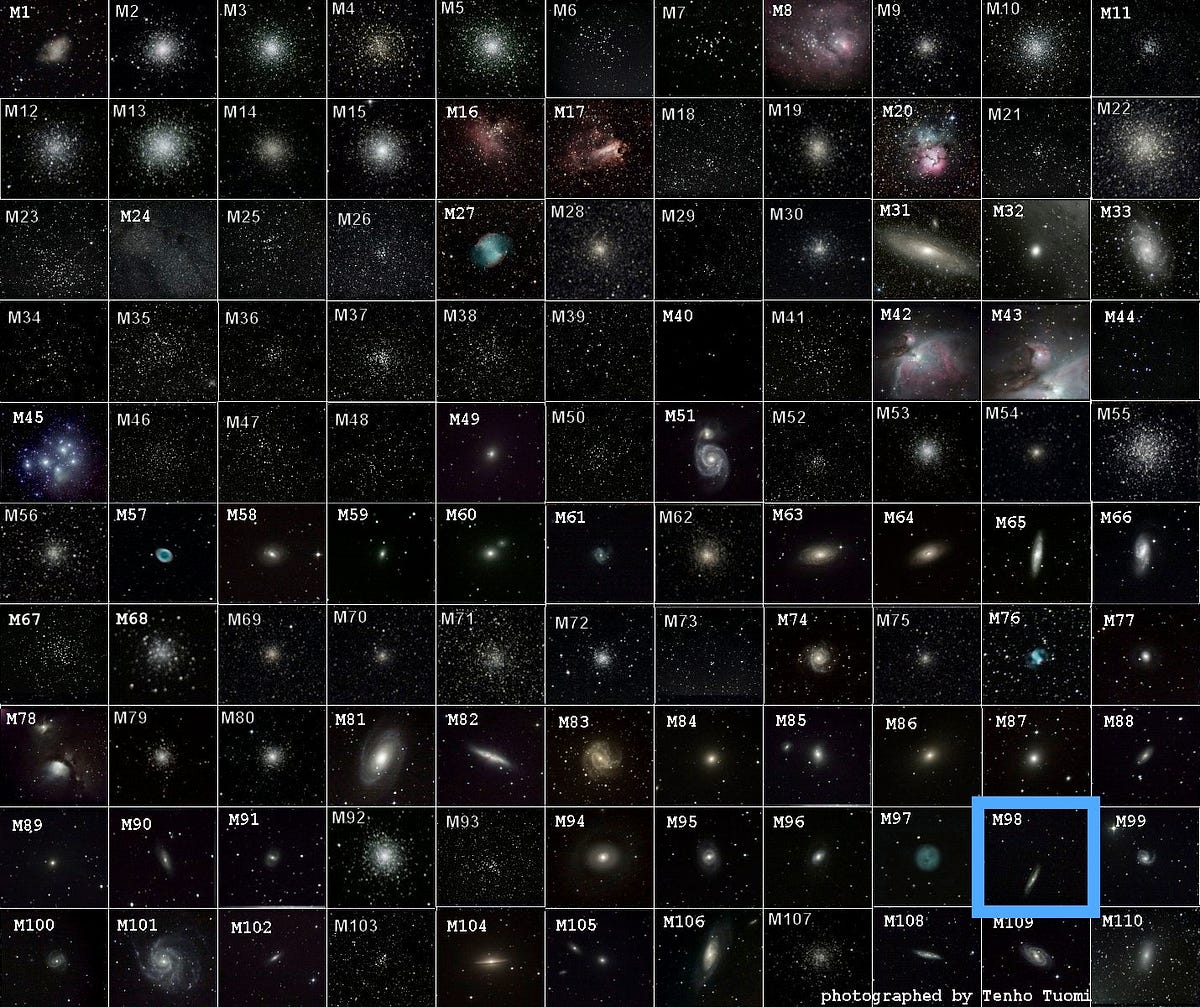
Almost all of the galaxies in the Universe are moving away from us, expanding away from one another and from ourselves as space itself expands. The biggest clumps and clusters of galaxies are bound together, however, and swarm in a myriad of directions, like bees in an agitated hive. And the biggest cluster nearest to us is the Virgo Cluster, located some 55 million light years away, and consisting of over 1,000 galaxies. Even at that distance, it’s so big in the skies that parts of it spill over into other constellations, like today’s object: Messier 98.
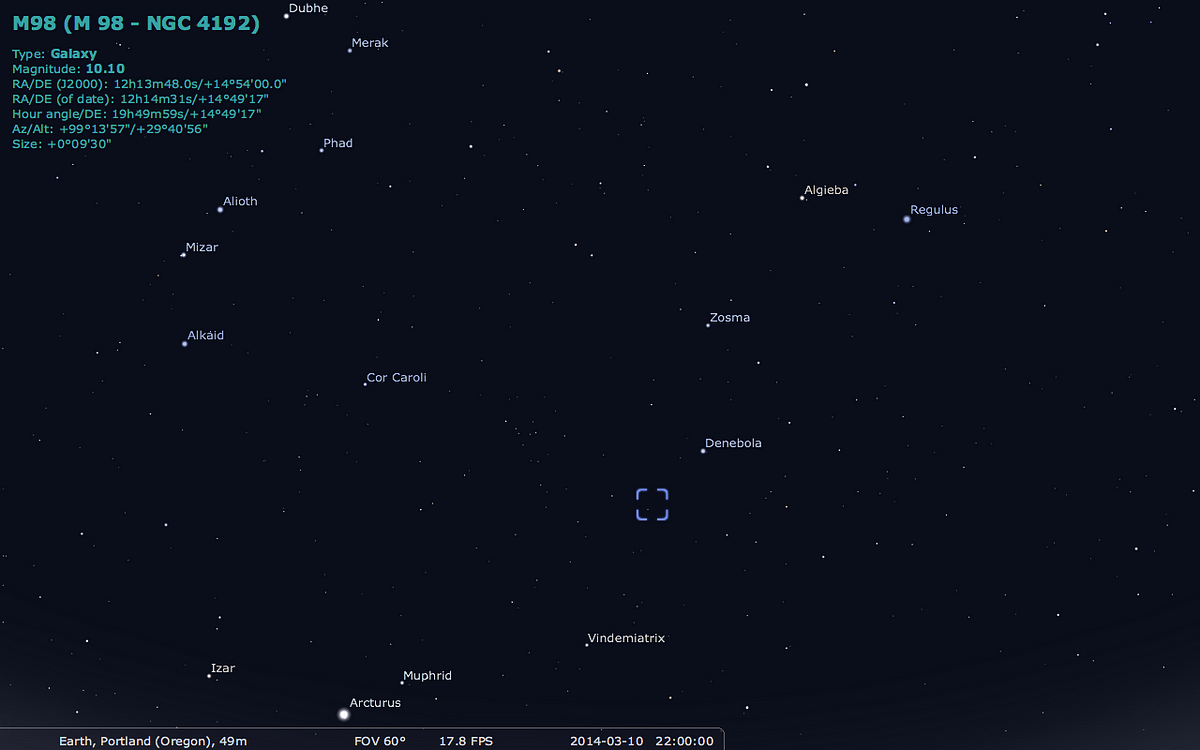
Beneath the Big Dipper, the most identifiable set of seven stars in the northern hemisphere, you can find the prominent star Cor Caroli by following the tip of the handle (Alkaid) and navigating perpendicular to it. Continue on, and you’ll come to Denebola, the second brightest star in the constellation of Leo.
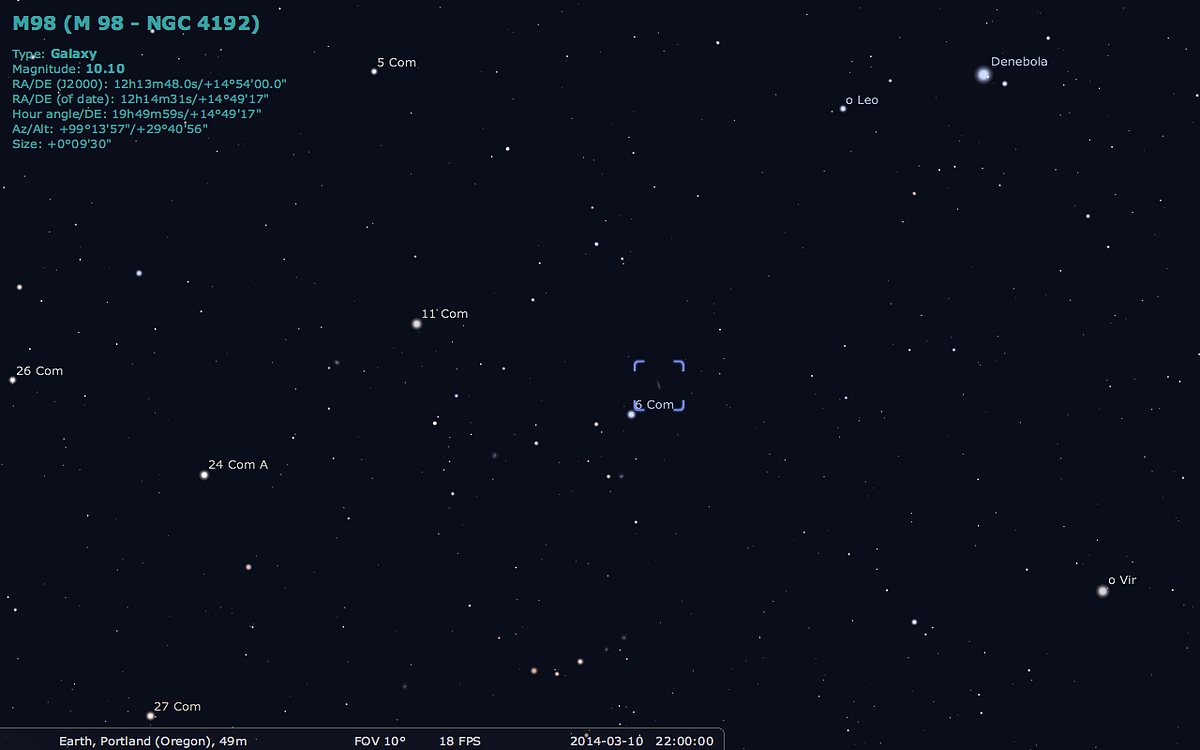
If you start at Denebola and navigate in the direction of Arcturus, the orange giant that’s the brightest northern hemisphere star, you’ll arrive at a rather unremarkable naked-eye star, 6 Comae Berenices. But while this faint blue star might be unremarkable to your unaided eye, try training a telescope (or an excellent pair of binoculars) on it, and a whole new world will open up.
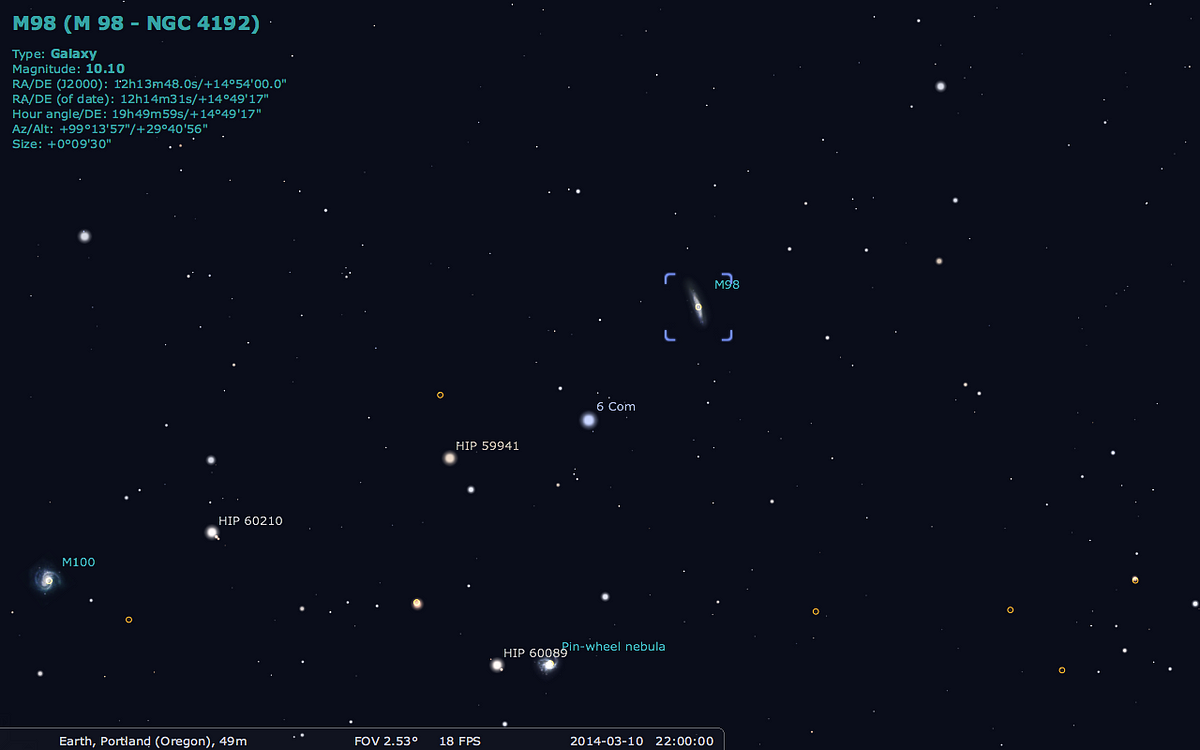
And by a “whole new world”, I mean that there are three Messier objects located within just a couple of degrees of this star, and many fainter galaxies. If you can find these stars, you can find one of the richer areas of the Virgo Cluster, and just a fraction of a degree back towards Denebola you can find today’s object, Messier 98! Discovered by Messier’s assistant, Pierre Méchain, this nearly edge-on spiral makes an interesting portrait if captured along with the blue star found alongside it.
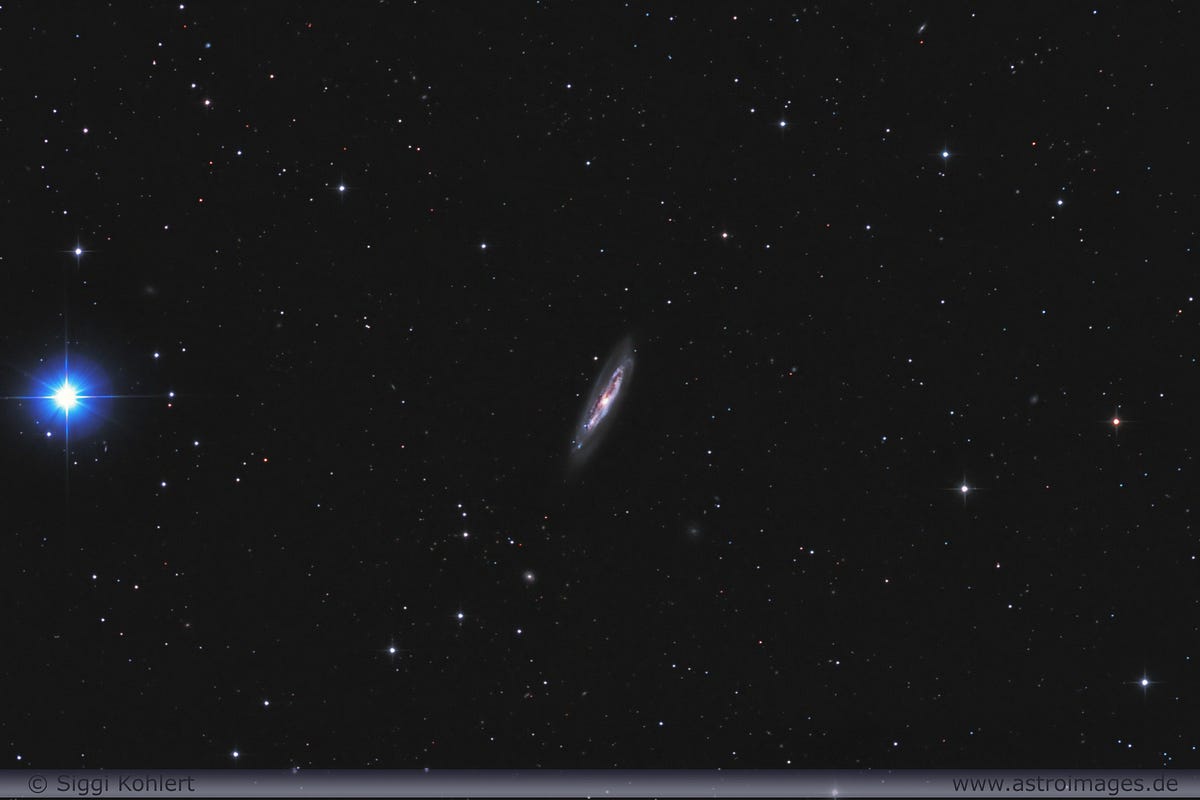
Remember that the blue star at left is barely visible to the unaided eye, and will disappear from view altogether under typical urban light pollution. I hope that puts into perspective how faint this galaxy is. But while the star in the picture is right around 200 light years away, Messier 98 is 44 million light-years distant. Even with around 70-100 billion stars inside, no wonder it’s so faint at that great distance!
But this is a highly unusual galaxy in a number of ways.
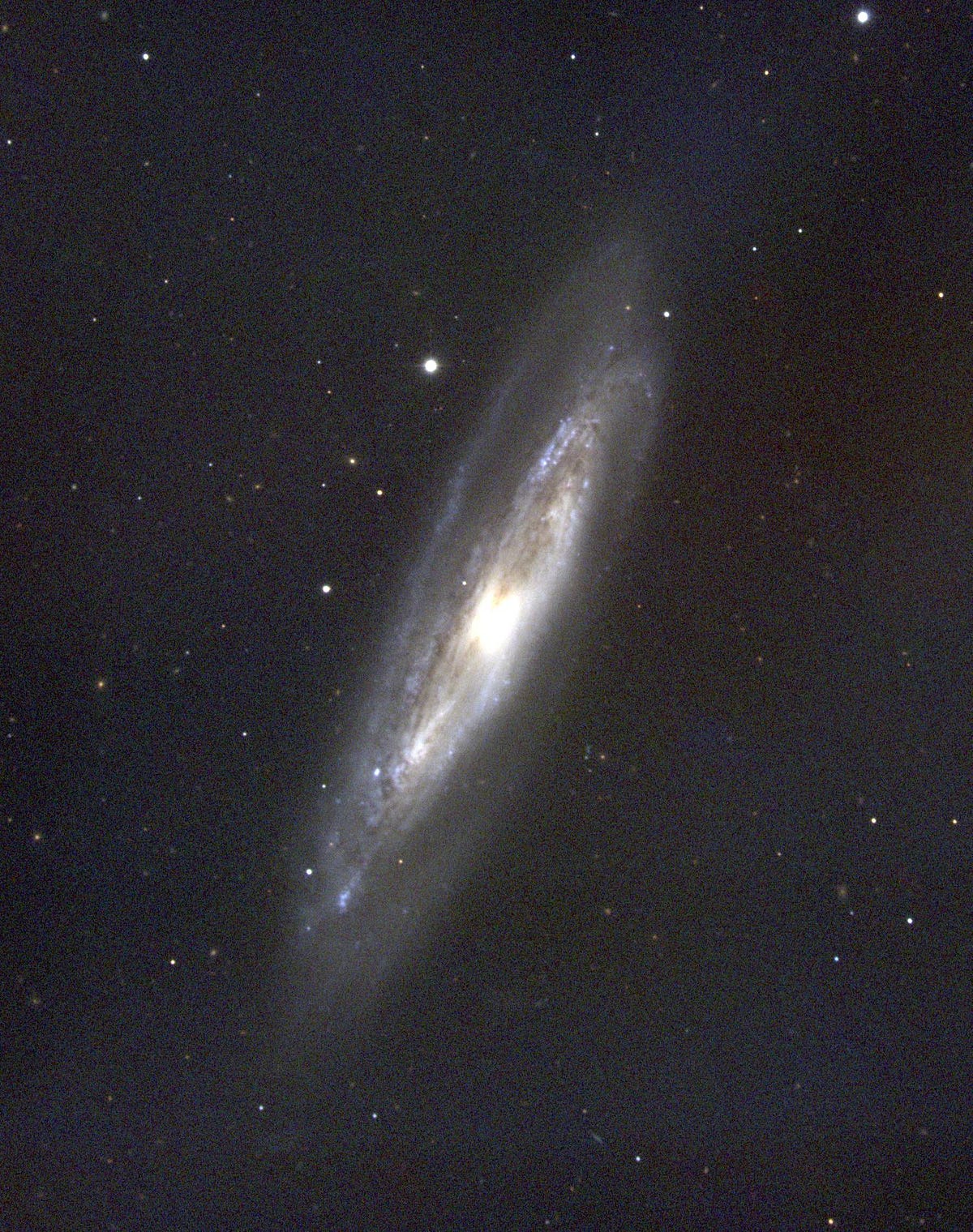
For one, even though it’s nearly edge-on — inclined at 74° relative to our line-of-sight — you can clearly see that its spiral arms are highly disrupted, like someone had pulled the outer arms out of the disk’s plane and bent them.
Well, that’s probably right! Its neighbor — the great Pinwheel of Virgo, Messier 99 — located about 1.3 million light years away from it, probably had a close encounter with it just under a billion years ago.
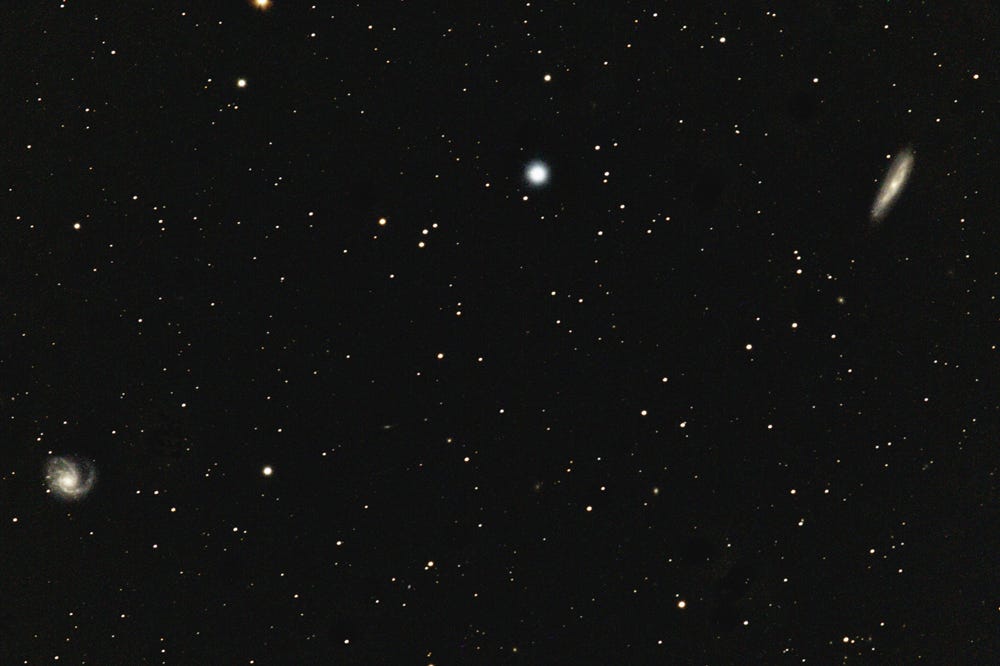
At some point in the distant future, these two somewhat comparably-size galaxies will merge, likely creating an elliptical galaxy in the process! At least, that will probably happen someday, but not anytime soon. You see, Messier 99 is moving away from us at some 2,400 km/s, but Messier 98 is moving towards us at 142 km/s, one of the most distant large galaxies to be blueshifted.
The gravitational potential well of the Virgo cluster is tremendous, and both of these galaxies are bound to it and each other, but are still moving rapidly. In fact, Messier 98 is one “end” of the central portion of the Virgo Cluster, with Messier 60 as the gateway at the other end!
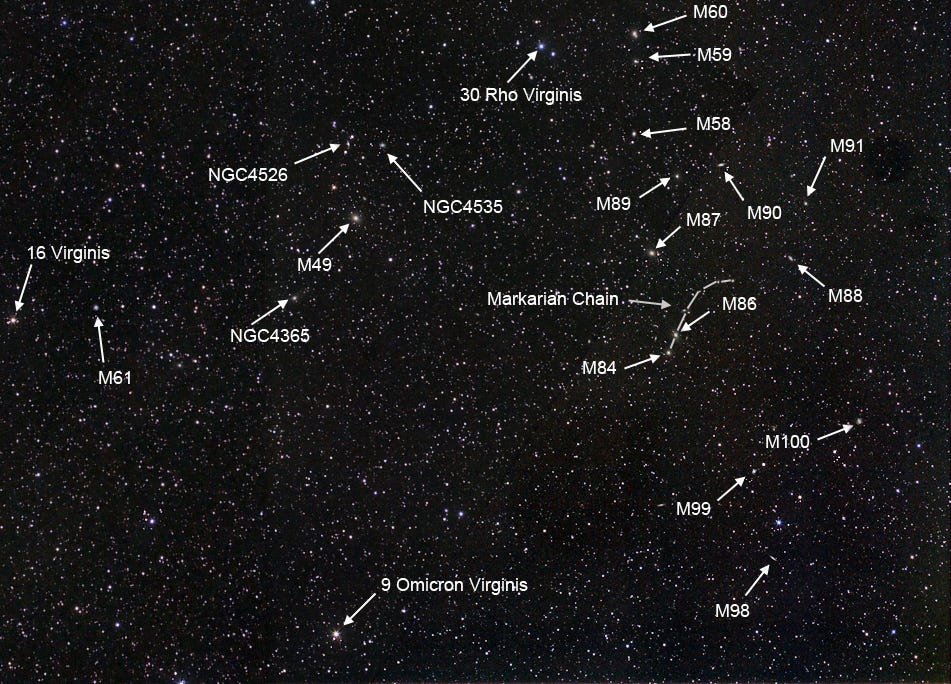
As for this galaxy itself, it contains an odd mix of barred and non-barred features. With a bright central bulge full of ionized hydrogen, prominent dust lanes that seem to pop out of the galactic plane, tightly wound arms and a fast rotation speed of 236 km/s, it’s still open for debate whether this galaxy is just undergoing star formation at its center, or whether the central ionization is powered by a supermassive black hole.
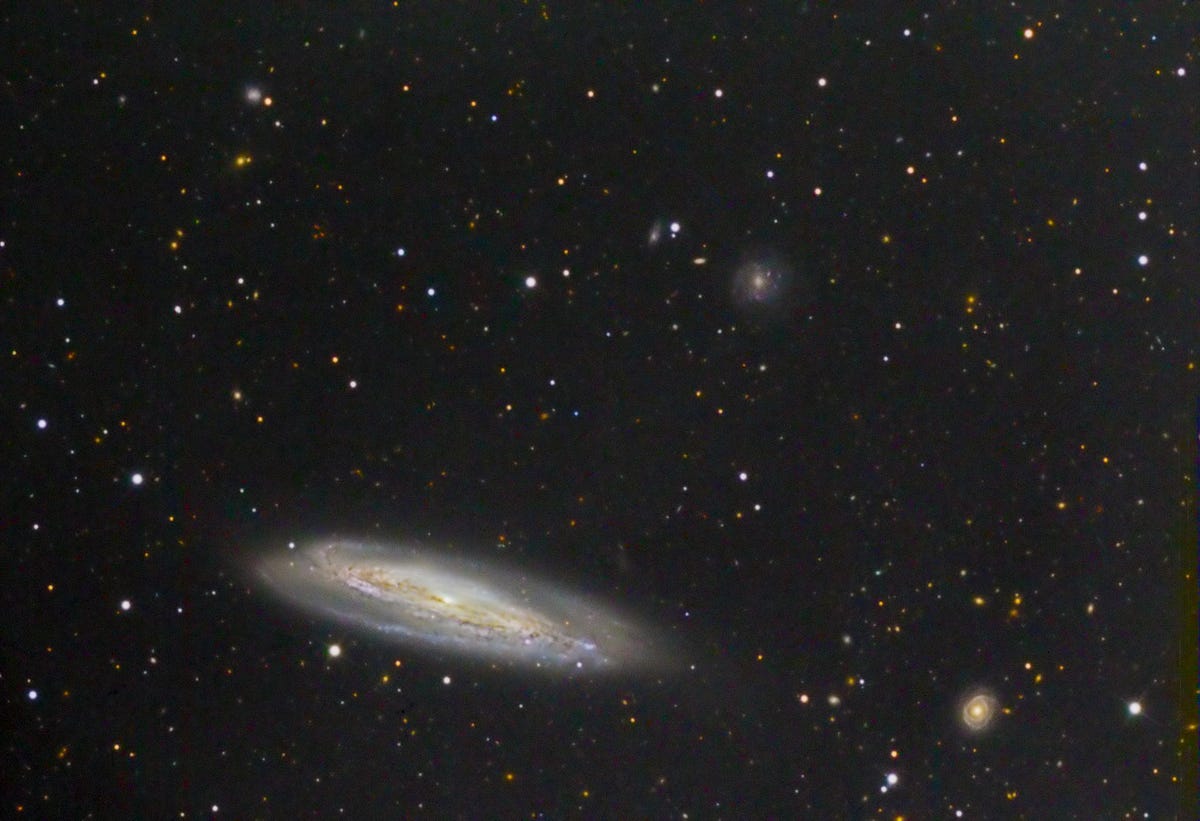
An excellent image, like the one above, will highlight that there are actually many faint, small galaxies in this galaxy’s vicinity. That’s what you get in or near the central region an ultra-rich cluster of galaxies like Virgo, and the great galactic pile-up will only get more and more concentrated over time!
Billions of years from now, these galaxies will further merge together and their velocities will level out, and many of the spirals you see here will merge into bigger and bigger giant ellipticals.
But we are not there yet.
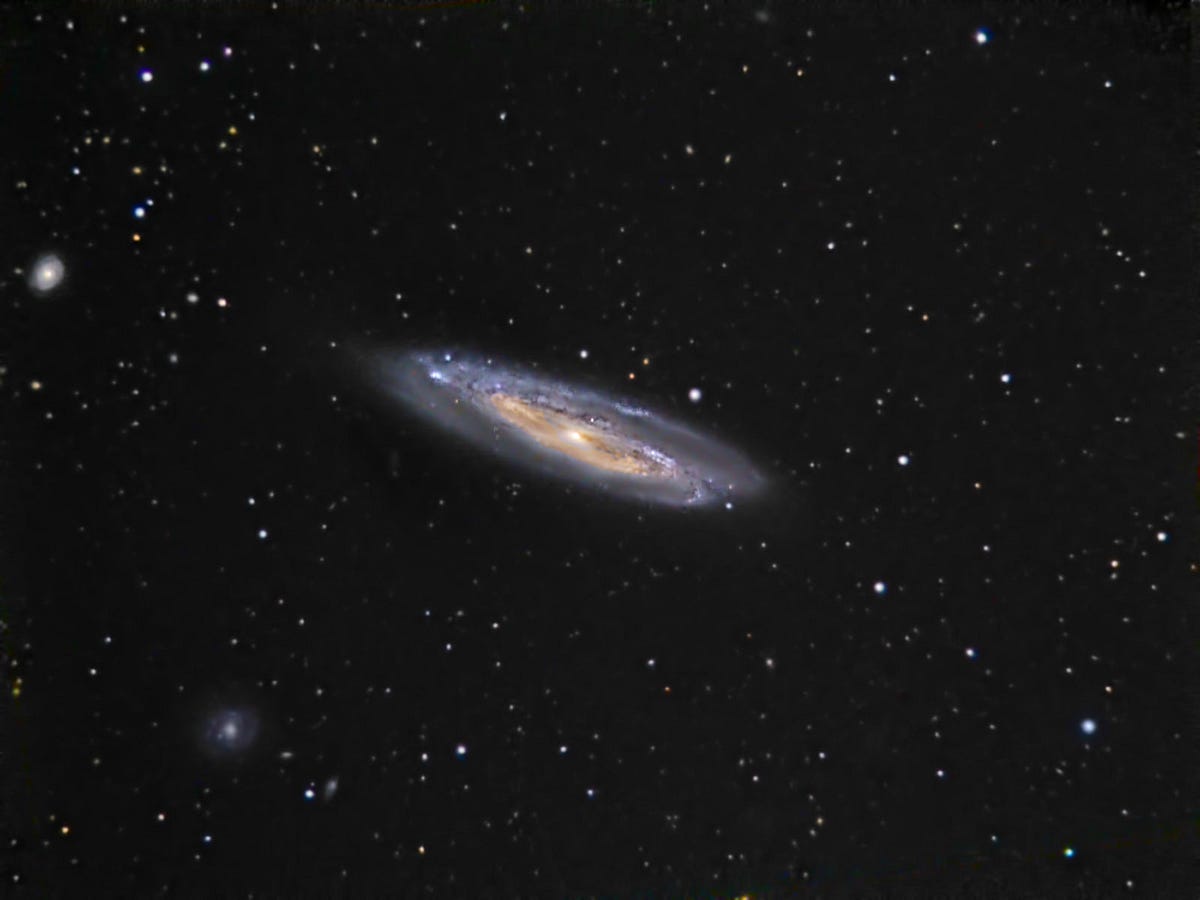
In the meantime, enjoy all the beautiful features this wonder of the night sky has to offer, and marvel at not only the young stars lining its disrupted spiral arms, but the incredible, wild future this galaxy has in store! That will bring us to the end of today’s Messier Monday, and if we look back, we’ve already touched on all the following deep-sky wonders:
- M1, The Crab Nebula: October 22, 2012
- M2, Messier’s First Globular Cluster: June 17, 2013
- M3, Messier’s First Original Discovery: February 17, 2014
- M5, A Hyper-Smooth Globular Cluster: May 20, 2013
- M7, The Most Southerly Messier Object: July 8, 2013
- M8, The Lagoon Nebula: November 5, 2012
- M11, The Wild Duck Cluster: September 9, 2013
- M12, The Top-Heavy Gumball Globular: August 26, 2013
- M13, The Great Globular Cluster in Hercules: December 31, 2012
- M15, An Ancient Globular Cluster: November 12, 2012
- M18, A Well-Hidden, Young Star Cluster: August 5, 2013
- M20, The Youngest Star-Forming Region, The Trifid Nebula: May 6, 2013
- M21, A Baby Open Cluster in the Galactic Plane: June 24, 2013
- M25, A Dusty Open Cluster for Everyone: April 8, 2013
- M29, A Young Open Cluster in the Summer Triangle: June 3, 2013
- M30, A Straggling Globular Cluster: November 26, 2012
- M31, Andromeda, the Object that Opened Up the Universe: September 2, 2013
- M32, The Smallest Messier Galaxy: November 4, 2013
- M33, The Triangulum Galaxy: February 25, 2013
- M34, A Bright, Close Delight of the Winter Skies: October 14, 2013
- M36, A High-Flying Cluster in the Winter Skies: November 18, 2013
- M37, A Rich Open Star Cluster: December 3, 2012
- M38, A Real-Life Pi-in-the-Sky Cluster: April 29, 2013
- M39, The Closest Messier Original: November 11, 2013
- M40, Messier’s Greatest Mistake: April 1, 2013
- M41, The Dog Star’s Secret Neighbor: January 7, 2013
- M42, The Great Orion Nebula: February 3, 2014
- M44, The Beehive Cluster / Praesepe: December 24, 2012
- M45, The Pleiades: October 29, 2012
- M46, The ‘Little Sister’ Cluster: December 23, 2013
- M47, A Big, Blue, Bright Baby Cluster: December 16, 2013
- M48, A Lost-and-Found Star Cluster: February 11, 2013
- M49, Virgo’s Brightest Galaxy: March 3, 2014
- M50, Brilliant Stars for a Winter’s Night: December 2, 2013
- M51, The Whirlpool Galaxy: April 15th, 2013
- M52, A Star Cluster on the Bubble: March 4, 2013
- M53, The Most Northern Galactic Globular: February 18, 2013
- M56, The Methuselah of Messier Objects: August 12, 2013
- M57, The Ring Nebula: July 1, 2013
- M60, The Gateway Galaxy to Virgo: February 4, 2013
- M63, The Sunflower Galaxy: January 6, 2014
- M64, The Black Eye Galaxy: February 24, 2014
- M65, The First Messier Supernova of 2013: March 25, 2013
- M66, The King of the Leo Triplet: January 27, 2014
- M67, Messier’s Oldest Open Cluster: January 14, 2013
- M71, A Very Unusual Globular Cluster: July 15, 2013
- M72, A Diffuse, Distant Globular at the End-of-the-Marathon: March 18, 2013
- M73, A Four-Star Controversy Resolved: October 21, 2013
- M74, The Phantom Galaxy at the Beginning-of-the-Marathon: March 11, 2013
- M75, The Most Concentrated Messier Globular: September 23, 2013
- M77, A Secretly Active Spiral Galaxy: October 7, 2013
- M78, A Reflection Nebula: December 10, 2012
- M79, A Cluster Beyond Our Galaxy: November 25, 2013
- M81, Bode’s Galaxy: November 19, 2012
- M82, The Cigar Galaxy: May 13, 2013
- M83, The Southern Pinwheel Galaxy, January 21, 2013
- M85, The Most Northern Member of the Virgo Cluster, February 10, 2014
- M86, The Most Blueshifted Messier Object, June 10, 2013
- M92, The Second Greatest Globular in Hercules, April 22, 2013
- M93, Messier’s Last Original Open Cluster, January 13, 2014
- M94, A double-ringed mystery galaxy, August 19, 2013
- M95, A Barred Spiral Eye Gazing At Us, January 20, 2014
- M96, A Galactic Highlight to Ring in the New Year, December 30, 2013
- M97, The Owl Nebula, January 28, 2013
- M98, A Spiral Sliver Headed Our Way, March 10, 2014
- M99, The Great Pinwheel of Virgo, July 29, 2013
- M101, The Pinwheel Galaxy, October 28, 2013
- M102, A Great Galactic Controversy: December 17, 2012
- M103, The Last ‘Original’ Object: September 16, 2013
- M104, The Sombrero Galaxy: May 27, 2013
- M106, A Spiral with an Active Black Hole: December 9, 2013
- M108, A Galactic Sliver in the Big Dipper: July 22, 2013
- M109, The Farthest Messier Spiral: September 30, 2013
If you enjoyed it or you have an object you’d like to see next, weigh in at the Starts With A Bang forum over on Scienceblogs. Either way, come back tomorrow for more wonders and joys of the Universe!





